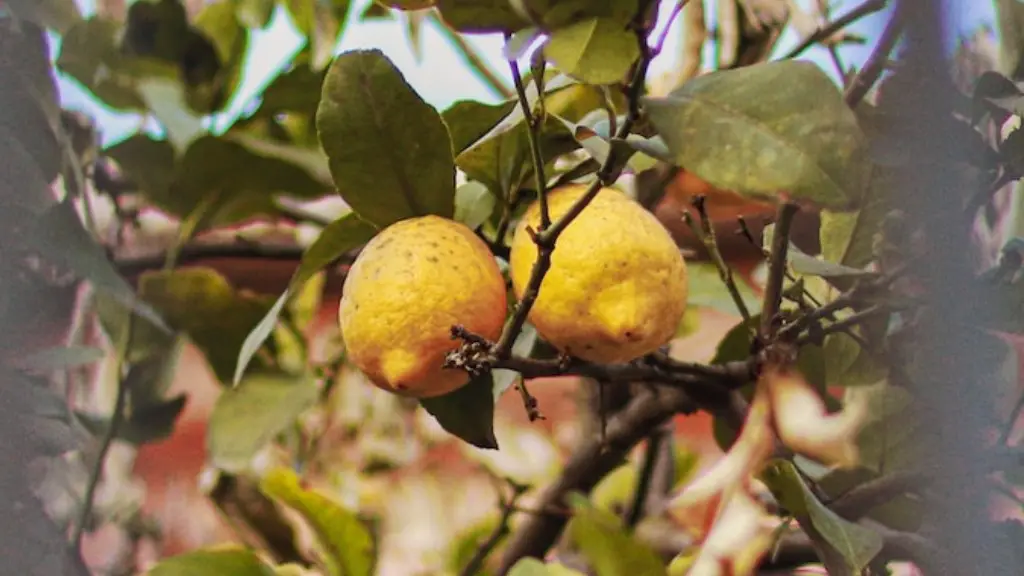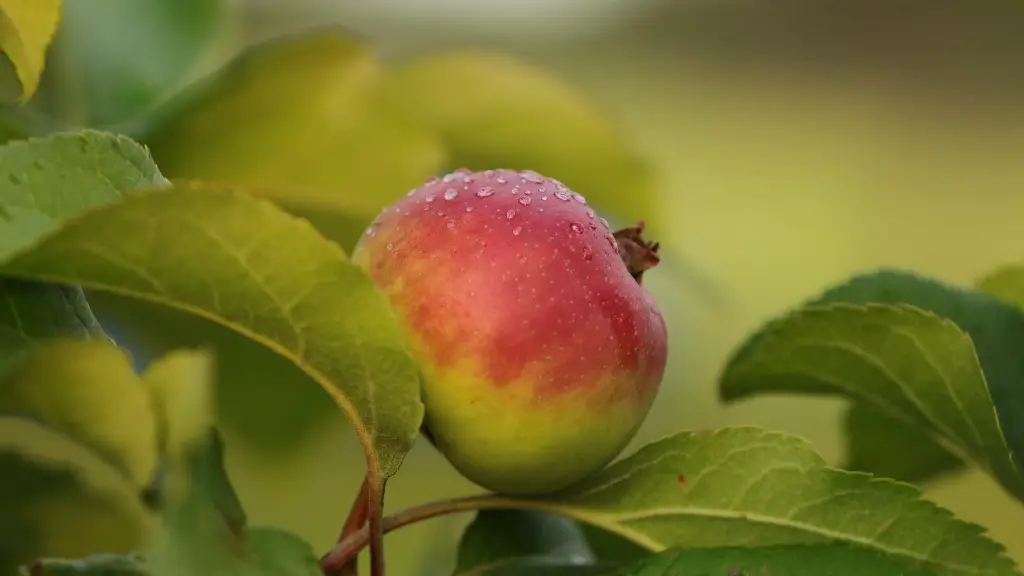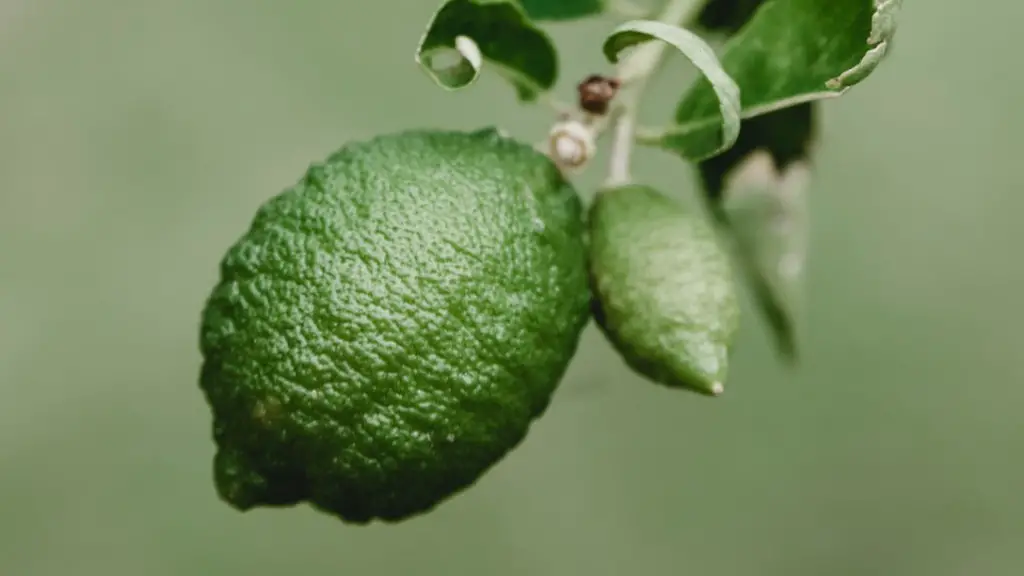Lemon trees are a Citrus tree most commonly grown in the Mediterranean, in California or Florida in the United States, and in Australia too. But with proper care, there’s no reason you can’t have one in your yard, even if you don’t have a lot of space. So, can a lemon tree grow in a pot? The answer is yes – but only if you give it what it needs to thrive.
The most obvious of the lemon tree’s needs is the right container. A pot should be at least 20 inches wide and have drainage holes in the bottom. If your chosen pot is less than 20 inches wide, you’ll still be able to grow a lemon tree in it – as long as you repot it into a larger one every two years or so.
Then there’s the planting medium. Lemon trees like a soil that is well-draining and has a neutral pH, though slightly acidic soil is still OK. While it’s a good idea to mix in some organic matter like compost to prevent leaching, avoid using potting soils that are rich in peat moss, as peat moss tends to make soils too acidic.
Sunlight is also important. Lemons need at least 6 to 8 hours of full sun every day, so choose a spot where the tree can get that much light. Once you’ve determined the optimal spot, make sure you water your tree regularly. Aim for at least a gallon of water every week during the growing season and less when your tree is dormant.
Keeping your containerized lemon tree fertilized is also key. When your lemon tree is actively growing, fertilize once a month with a balanced fertilizer specifically formulated for citrus trees. Apply at the recommended rate, and only water if the soil is dry, otherwise wait for a few days.
Finally, humidity plays an important role. Lemon trees aren’t at home in dry climates, so you’ll need to mist your tree from time to time. That said, excessive humidity causes fungal diseases, so be careful not to overdo it. A safe rule of thumb is to mist your lemon tree no more than twice a week.
At the end of the day, the success of your lemon tree in a pot depends on the attention you give it. With the right container, soil, light and humidity, you can look forward to harvesting healthy lemons in no time.
Fertilizing and Pruning Lemon Trees
Fertilizing and pruning your lemon tree is essential in order to have a healthy and productive citrus tree, regardless of containers. A slow-release fertilizer formulated for citrus works well in controlling the rate at which nutrients are released into the soil. Pruning trees regularly encourages the growth of healthy and well-shaped branches, as well as increases fruit production.
When pruning, always begin by removing any dead, damaged, or diseased branches and stems. Then, prune off any branches that cross over one another – as well as any branches that are too long for the pot size. Finally, make sure that you don’t leave any stubs on the tree by cutting at a 45-degree angle just above the branch collar. This will help the lemon tree heal faster.
For best results, fertilize your lemon tree every two to three months during the growing season (April through September) with a citrus fertilizer that is low in nitrogen but high in magnesium, sulfur, and potash. However, if you’re working with a mature lemon tree, then you may only need to fertilize every 6 months or so.
It is also important to note that when caring for a lemon tree in a pot, you will need to pay extra attention to pests, particularly spider mites, aphids, and scale insects. These can easily infest a containerized citrus tree, so you should always make sure to inspect the leaves and stems of your tree for any signs of these pests.
Finally, protecting your lemon tree from frost is another essential part of caring for lemon trees in containers. If you live in an area with frost, make sure to move the pot to a protected area during the winter months. Alternatively, you can also wrap the tree in burlap or insulate the pot with hay or straw.
Re-potting Lemon Trees
Occasionally, lemon trees must be re-potted or repositioned to suit their size or the available space. Repotting your lemon tree is a great way to provide extra space to grow and rejuvenate the overall health of your tree. It is recommended that you re-pot your lemon tree every two to three years.
When re-potting your lemon tree, choose a container that is at least one or two inches larger than the current container. If the lemon tree is root-bound, choose a pot that is a few inches larger to provide adequate room for the root system. It’s also important to make sure that the new container has enough drainage holes in the bottom and sides.
Once you’ve chosen the new container, it’s time to remove the old soil from the roots. To do this, gently roll the root ball with your hands until the soil is removed. If there are any root systems that are too tightly bound and difficult to loosen, you can use a sharp knife and carefully cut away the excess.
Once the root ball has been cleared, place it into the new container and fill it with the appropriate growing medium. Use a citrus fertilizer according to the manufacturer’s instructions and water thoroughly. Then, if necessary, add a layer of mulch to the top to help retain moisture in the soil.
How Tom Make Lemon Tree Grow Fast
In order for a lemon tree to grow fast, there are several steps that need to be taken. The most important aspect of growing a lemon tree is providing it with enough light and water. Lemon trees require at least six hours of sunlight per day and should be watered regularly, about one gallon of water per week on average during the summer months. Fertilizing your lemon tree every two to three months will also help it to grow faster.
Pruning your lemon tree properly is also important for its growth. Pruning encourages strong and healthy branches as well as increased fruit production. Start by removing any dead, damaged, or diseased branches and then prune off any branches that cross over one another or are too long for the pot size. Make sure not to leave any stubs, cutting at a 45-degree angle just above the branch collar.
Finally, keeping your lemon tree in the right pot is essential. A pot should be at least 20 inches wide and have drainage holes in the bottom, and should be placed in an area with 6 to 8 hours of full sun. You should also use soil that is well-draining and has a neutral or slightly acidic pH and add some organic matter like compost, but avoid using potting soils that are rich in peat moss.
Curing Diseases of Lemon Tree
Lemon trees may occasionally suffer from a few diseases, such as Anthracnose, scab, leaf spot, and Botrytis. Anthracnose is caused by a fungus and primarily affects the leaves of a lemon tree, causing dark spots and lesions on the foliage. Leaf spot is another fungal disease caused by a variety of fungi, which causes dark spots on the foliage that can spread to the fruit.
Scab is another fungal disease that causes spots on the fruit of a lemon tree, while Botrytis is a fungus that attacks the fruit, causing them to rot. These diseases can spread quickly, so it’s important to treat them as soon as you notice them.
To combat diseases affecting your lemon tree, you should always start by removing any affected branches or foliage. Larger branches can be pruned to get rid of the infected parts, while smaller branches or leaves can be removed by hand. You should also sterilize your pruning tool with alcohol or bleach to avoid spreading the disease from one part of the tree to another.
Finally, make sure you keep your lemon tree healthy by regularly fertilizing and providing adequate sunlight, water, and humidity. Treatment with a fungicide is also a good idea to get rid of any disease that has already taken hold of the tree.
Harvesting Lemons
Harvesting lemons is a great way to enjoy the fruits of your labor, as they can be used to make many delicious dishes. The best time to harvest lemons from your tree depends on how you plan to use them. For immediate consumption, it’s best to harvest them when they are still firm and green, as lemons that are slightly yellow may be overripe.
When harvesting lemons, use a pair of clean and sharp pruning shears to gently cut the fruit from the branch. Take care not to tug or pull the fruit as this may cause broken branches and damage the tree. After harvesting, keep the lemons in a cool, dry place so that they don’t spoil. Because lemons are highly perishable, it’s best to use them up within a couple of days.
If you’re looking to preserve your lemons, you can also pick them when they are still quite green and store them in a cool place or the refrigerator. It’s also possible to freeze lemons or make them into lemonade or a syrup.
At the end of the day, harvesting lemons from your own tree is an enjoyable experience. With the right care and attention, you’ll be able to enjoy the fruits of your labor for years to come.




